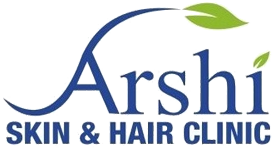Call Us - 040 - 48 55 55 55
- Home
- About
- Treatments
- Skin Treatments
- Hair Treatments
- Surgical Treatments
- Anti Aging Treatments
- Lip Fillers
- Fillers for Tear Trough
- Gummy Smile Correction
- Neck Lines Correction
- Nefertiti Lift Treatment
- Signature Anti Ageing Treatment with Skin Boosters
- Non Surgical Rhinoplasty
- Non Surgical Chin Correction
- Non Surgical Double Chin Correction
- Non Surgical Cheeks Enhancement
- Non Surgical Skin Tightening
- Non Surgical Eye Brow Lift
- Cosmetic Treatments
- Children Drematology
- Packages
- Gallery
- Blog
- Contact
Nbuvb / UVA Treatments
Narrowband UVB (NB-UVB) and UVA (PUVA) treatments are two common types of phototherapy used for the treatment of vitiligo. Both therapies involve exposing the affected skin to specific wavelengths of light to stimulate the production of melanin, the pigment responsible for skin color. Here’s a detailed look at each of these treatments:
- Narrowband UVB (NB-UVB) Therapy:
NB-UVB is a type of phototherapy that uses a narrow band of ultraviolet B (UVB) light, which has a wavelength of 311-312 nm. This wavelength is believed to be the most effective in stimulating melanocyte activity and promoting repigmentation in vitiligo.
During treatment, the patient is exposed to NB-UVB light for a short period of time, usually starting with a few seconds and gradually increasing to several minutes per session. The treatment is typically performed 2-3 times per week, and the duration of treatment varies depending on the severity and extent of the vitiligo.
NB-UVB therapy has been shown to be effective in inducing repigmentation in up to 80% of patients with vitiligo, with the face and neck areas responding best to treatment. Side effects of NB-UVB therapy may include mild erythema (redness) and itching, although these are typically temporary and resolve within a few hours after treatment.
- UVA (PUVA) Therapy:
UVA therapy involves the use of ultraviolet A (UVA) light, which has a longer wavelength than UVB light. PUVA, or psoralen plus UVA therapy, is a specific type of UVA treatment that involves the use of a photosensitizing drug called psoralen, which is taken orally or applied topically to the affected skin prior to exposure to UVA light.
PUVA therapy is typically used in cases of more extensive vitiligo or when NB-UVB therapy has not been effective. During PUVA treatment, the patient is exposed to UVA light for a short period of time, usually starting with a few seconds and gradually increasing to several minutes per session. The treatment is typically performed 2-3 times per week, and the duration of treatment varies depending on the severity and extent of the vitiligo.
PUVA therapy has been shown to induce repigmentation in up to 70% of patients with vitiligo, although it may take longer to see results compared to NB-UVB therapy. Side effects of PUVA therapy may include temporary erythema, itching, and an increased risk of skin cancer with long-term use.
In conclusion, NB-UVB and UVA (PUVA) therapies are two effective phototherapy treatments for vitiligo. While both therapies have been shown to induce repigmentation in the majority of patients with vitiligo, the choice of treatment may depend on the extent and severity of the condition, as well as any existing medical conditions or risk factors. Patients should discuss the risks and benefits of each treatment with their dermatologist before deciding on a course of treatment.
Frequently Asked Questions
Why ARSHI SKIN & HAIR CLINIC ?
At ARSHI SKIN AND HAIR CLINIC, SENIOR DERMATOLOGIST, DR.T.ANNAPURNA who has specialized in Vitiligo management, will devise the treatment protocol after thorough examination .She has performed Vitiligo surgeries on hundreds of patients in her decade spanning career and is world renowned for her success rate.
THE CENTRES ARE WELL EQUIPPED WITH FULL BODY CHAMBERS AND HAND AND FOOT PANELS FOR OPTIMUM TREATMENT.
FOR PATIENTS WHO CANNOT PAY REGUALR VISITS TO THE CLINIC,A CUSTOMIZED HOME CARE NARROW BAND UVB DEVICE IS PROVIDED ALONG WITH TREATMENT PROTOCOL AND USAGE INSTRUCTIONS.

